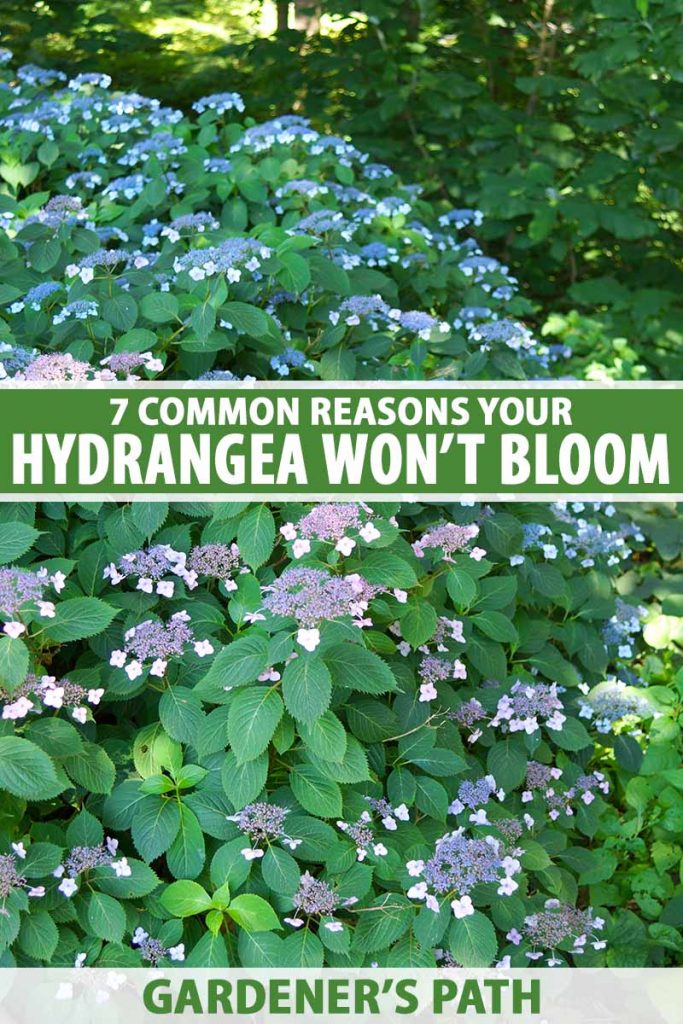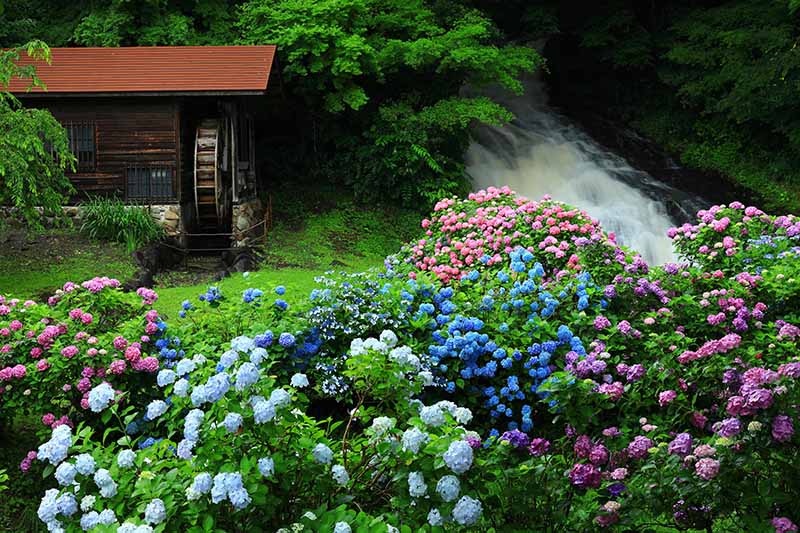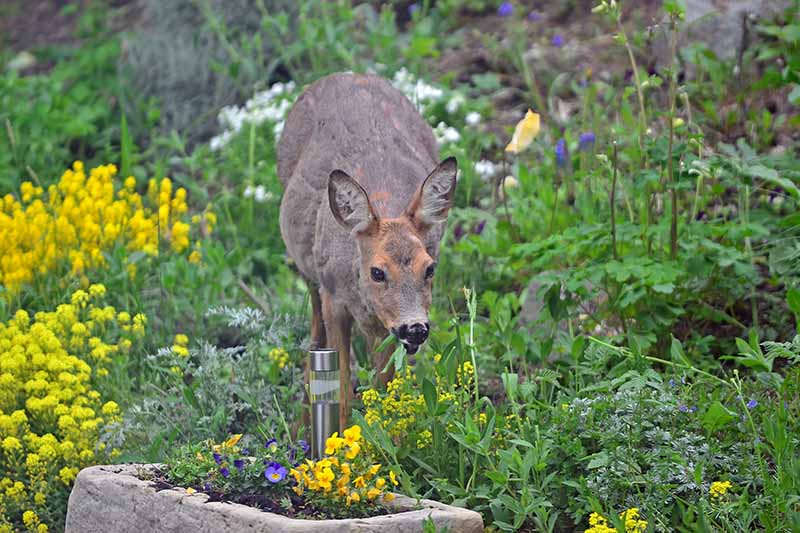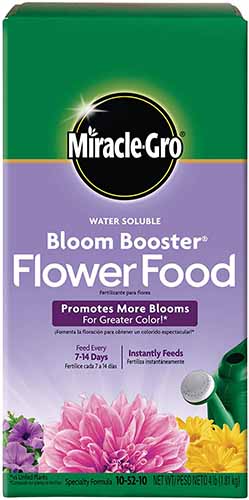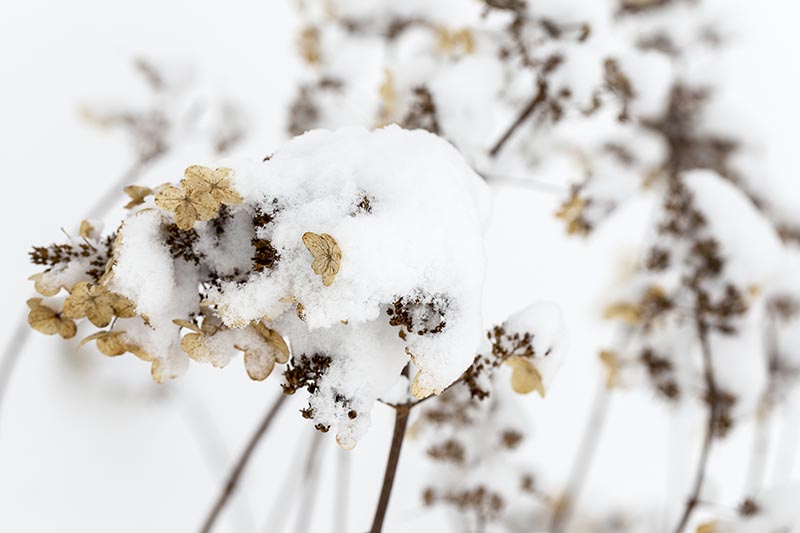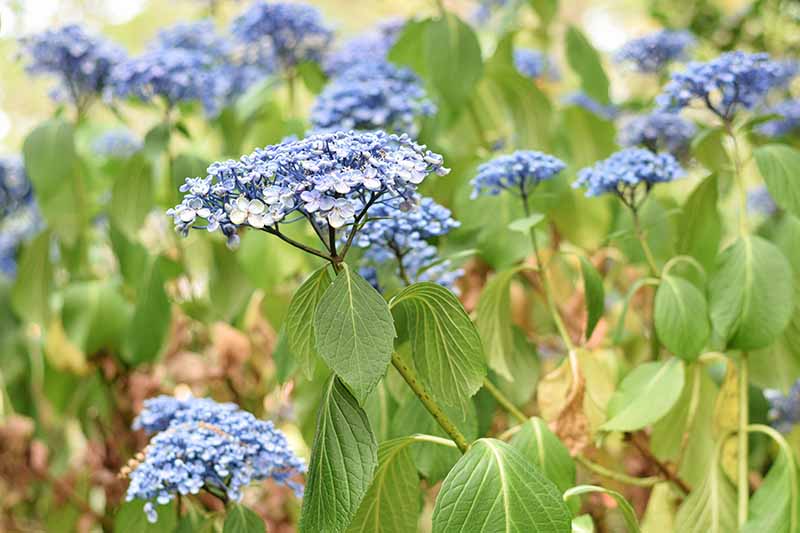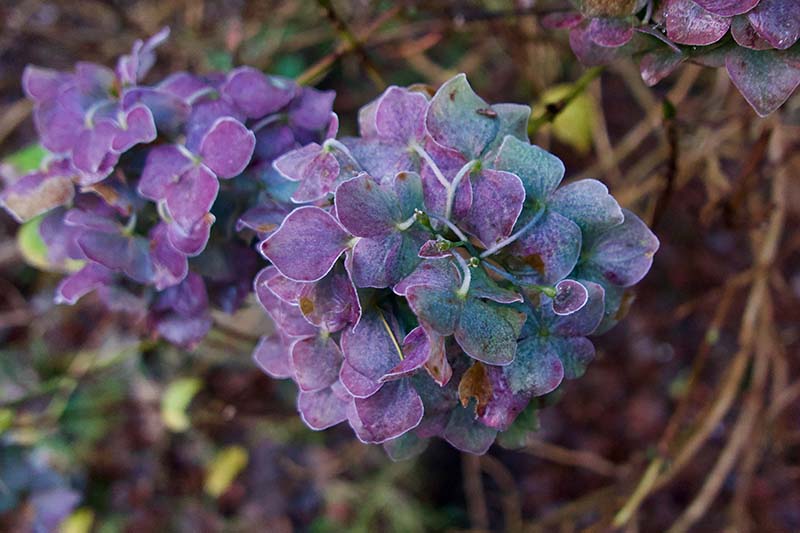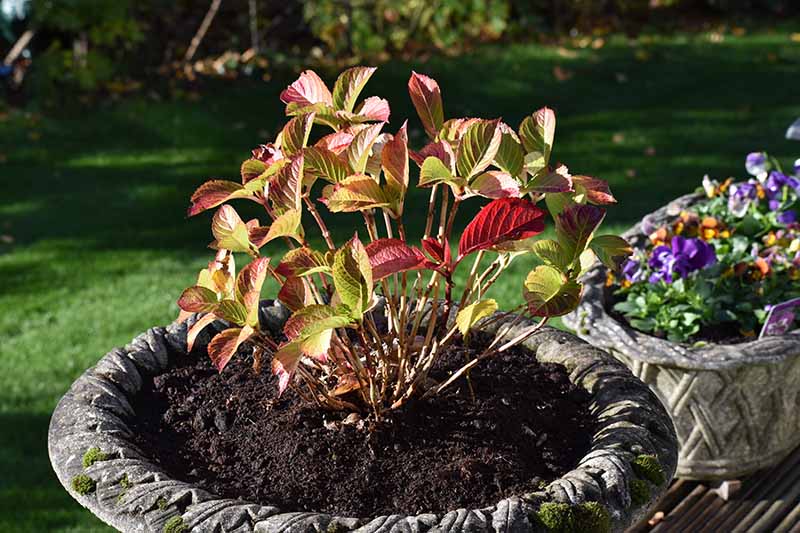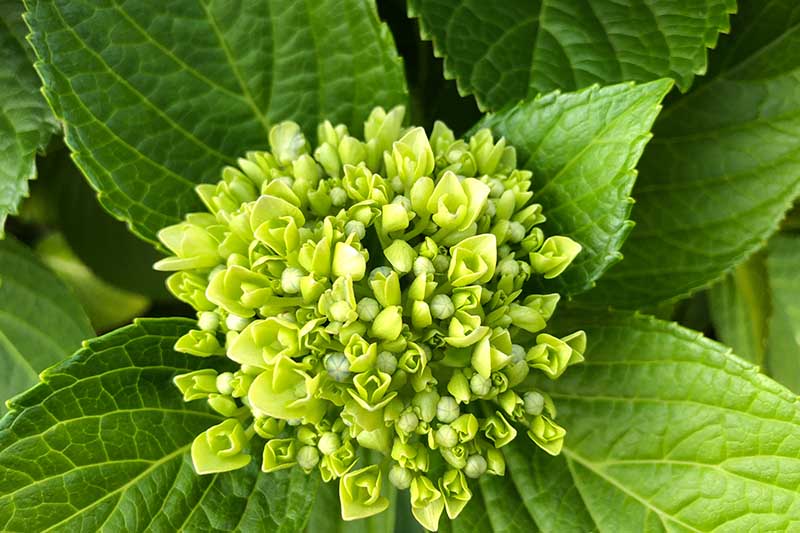Their eye-catching blossoms (technically an inflorescence) come in a range of colors, from deep purple to bright pink, and icy blue to pale lavender. There are also varieties with white or green blooms. Their display is so splendid that you might find it particularly upsetting when they fail to send out their distinct flowers. We link to vendors to help you find relevant products. If you buy from one of our links, we may earn a commission. Let’s face it: hydrangeas can be fussy about temperature, light, and moisture, and some work is required on the part of the gardener to help them to be as beautiful as they possibly can. But once you know what’s going on, most issues are easy to address. As discussed in our guide to growing hydrangeas, these shrubs fall broadly into five categories: climbing (H. petiolaris), smooth (H. arborescens), panicle aka peegee (H. paniculata), oakleaf (H. quercifolia), and bigleaf (H. macrophylla). Bigleaf, also known as French hydrangea (though this species originally comes from Japan), is the species that gardeners experience problems with most often when it comes to a lack of blossoms. Many bigleaf and oakleaf cultivars only flower on old wood, that which was produced in the previous summer or earlier. New wood, on the other hand, is that which emerges in the current growing season. This blooming habit can have an impact on whether or not a plant will send out blossoms. If something happens to the old wood as it’s sending out the buds that will eventually turn into flowers, you won’t get a floral display that year. But it isn’t just plants that bloom on old wood that can fail to flower. Up ahead, we’ll discuss seven of the most common issues you may run across and how to tackle them. Ready to jump in?
1. Hungry Deer
According to information provided by the New Jersey Agricultural Experiment Station at Rutgers University, which works with experts to rate the deer tolerance of various plants, all groupings of hydrangeas, from bigleaf to climbing, are “occasionally severely damaged” by deer. That means these plants are “often preferred” by deer looking for something to eat. So what does this have to do with the fact that you’re not seeing the flowers you want to see? The common concern is that the deer might eat the buds on the old wood during the fall, winter, or spring. If you have a plant that only blooms on old wood and that happens, you won’t have blossoms the following summer. If your plant has a few blossoms here and there that look perfectly healthy, but overall the number of blooms is reduced, it’s possible that deer nibbled some but not all of the buds. Deer are notorious for just browsing a few branches here and there before moving on to another plant. So how do you identify deer damage versus damage caused by other types of pests? Assuming you don’t see the animals themselves, look for their tell-tale eating habits. Deer rip the leaves off a plant, so you’ll see evidence of tearing, like ragged edges on leaves and torn stems. They also tend to eat young green wood, buds, and leaves, and avoid the petioles (the stems of the leaves) and brown wood. The solution is, of course, to keep marauding ungulates out of your garden. Fencing works best, and our guide to deer fencing has you covered if you need some help constructing your barrier. You can also wrap plants in burlap, which has the added benefit of protecting them from extreme cold, another culprit that may result in failure to bloom. Learn more about this below in the section on harsh winters.
2. Excess Nitrogen
Any flowering plant that is given too much nitrogen fertilizer may put too much energy into growing its foliage, at the expense of its flowers. Nitrogen is one of the primary nutrients that plants need to survive. They use it to form new leaves and support existing foliage. Phosphorus, another one of the necessary main nutrients, is utilized by plants to make new roots, seeds, fruit, and flowers. If hydrangeas are fed more nitrogen than potassium, they may skip flowering and grow more foliage instead, and leaves that are larger. If you aren’t sure whether nitrogen is causing the issue or not, test your soil.
3. Harsh Winters
With bigleaf cultivars that only bloom on old wood, a harsh winter can cause the plant not to flower the following year. Miracle-Gro Water Soluble Bloom Booster Flower Food The solution is to use a slow-release fertilizer with a higher amount of phosphorus than nitrogen. Look for a product that is labeled for use to encourage flowering, like Miracle-Gro Water Soluble Bloom Booster Flower Food, available via Home Depot. This species is usually cold hardy to Zone 6, though there are a few exceptions. If you have a particularly nasty winter, you might want to provide some protection. That’s because the buds that will turn into flowers form on old wood starting in the fall, but if there is a frigid winter, it can kill those developing buds. Anything below 5°F can be a problem. Even though oakleaf hydrangea also forms blooms on old wood, these are more cold hardy and don’t usually suffer from this issue. To protect plants in the winter, wrap them in several layers of burlap and secure the material in place with some twine. You can leave them under cover for the entire winter or just protect them during cold snaps. Remove the burlap once low air temperatures are consistently 15°F or higher.
4. Not Enough Water
All types of hydrangeas like a good amount of moisture, with consistently moist soil. If yours is consistently drying out, your plants might not bloom. Plants in the bigleaf species might need to be watered every other day if you live in a hot and dry climate. These plants need about two inches of water per week, so if you aren’t getting enough rain, you’ll need to provide supplementary irrigation. A rain gauge can help you figure out how much moisture your plants are receiving from Mother Nature so that you can supplement with the rest. Other species aren’t so fickle, but keep an eye on them to ensure they have enough water. If the leaves start to droop and wilt, especially in the heat of the day, this is a sign that they aren’t receiving the quantity of water that they want.
5. Pruning Problems
Pruning is one of the most common contributors to a lack of blossoms. If you prune any time from autumn to late spring, you might be cutting off the growth on the old wood that would have turned into flowers. So when exactly should you prune to avoid this problem? Do it in the summer, after the flowers have faded but before the fall hits. That leaves a small window for cutting your plant back if you want a showy display in the spring. There’s one exception to this: you should prune off dead branches in the spring, back to the point of live growth. Dead wood is dry, snaps when you bend it, and won’t have any visible new growth. You can also deadhead flowers after they have faded, or just leave them on the plant. If you decide to deadhead, snip the flower heads off above the first set of leaves. If all of this seems too intimidating, don’t prune your bigleaf or oakleaf plants at all! Also keep in mind that you aren’t the only one who might be pruning at the wrong time. As I mentioned above, deer might nibble on that fresh growth, essentially pruning it for you.
6. Too Much Shade
Hydrangeas grow well in partial shade, but too much of it and they won’t flower. Everlasting® ‘Revolution’ Everlasting® ‘Revolution’ is another such option that grows best in Zones 5-9. Plants are available from Burpee. While these plants traditionally grow wild in the understory of forests, they still receive some dappled sun in their natural habitat. If yours is planted in a spot where it isn’t receiving enough sun, you won’t see blossoms. This is often a problem when a gardener plants their hydrangea under some trees that aren’t fully mature. As those trees grow and fill out, they block more and more sunlight from reaching the ground. It’s easy to fail to notice this problem developing because it happens so gradually. Then, one year when your plant doesn’t send out those lovely flowers, you suddenly realize that its location has gotten shadier over time. That isn’t the only situation that can reduce the amount of light your plants get. You might also have had a particularly cloudy spring. If you planted your hydrangea within the last year or two, double-check to make sure it is receiving about three hours of sun, preferably in the morning, with protection from the afternoon rays. Active Air 3-Way Meter This Active Air 3-Way Meter from Arbico Organics measures moisture, light, and soil pH, so you can see what’s going on with your planting area. Panicle types in particular need a fair amount of sun to bloom. They can even handle full sun in many climates. Oakleafs may do well in deeper shade in some zones.
7. Too Much Sun
On the other hand, too much sun can also be a problem. A plant that is hit with more sun than it likes becomes stressed, and a stressed plant may decide to skip blooming to conserve energy. H. paniculata can handle full sun, but H. macrophylla needs part shade to thrive, especially in hot regions like Zones 8 and 9. In cooler regions, like Zones 5-7, they can be in full sun. Again, as with too much shade, you can use a meter to determine how much light your plants receive. Also, check on them in the afternoon to see if they are looking wilted. If you see leaf scorching, this is a sure sign that your plant isn’t in the right spot. Look for yellowing and browning on the edges and tips of the leaves. New plants tend to focus energy on establishing roots and developing healthy foliage before they try to reproduce, or in other words, make flowers. If that’s the case, just give your plants some time and ensure that you’re providing the food and water they need to support their efforts. But if an established hydrangea suddenly stops blooming, this list should help you get things back on track. Let us know which fix makes your hydrangea bloom again, and share your questions in the comments section below so we can help other readers solve their blossoming woes! And for more information about growing hydrangeas in your garden, check out these guides next:
How to Identify and Treat Hydrangea Diseases25 of the Best Hydrangea Varieties for Landscaping, Both Large & SmallHow to Grow Hydrangea Flowers in ContainersHow to Shape Your Hydrangea into a Tree
